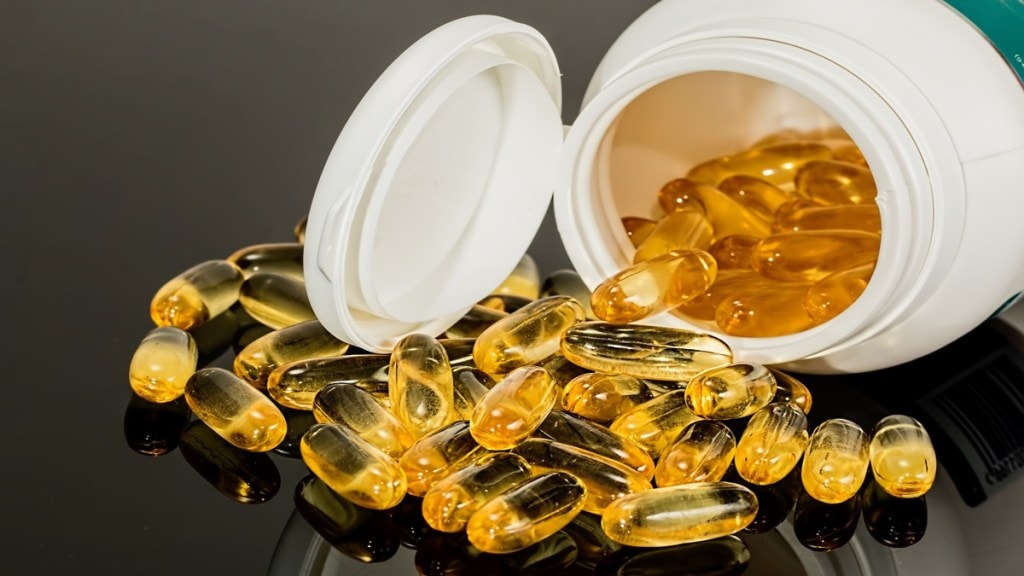As the impact of climate change and global warming is increasingly becoming prevalent across the world, companies are looking for more sustainable approaches in almost every sector including pharmaceutical space.
According to reports, many drugmakers worldwide have adopted an environmental, social, and corporate governance framework known as Environmental, social, and governance (ESG). These frameworks are a way for corporations to evaluate how they are working on behalf of social goals that go beyond trying to maximise profits for shareholders.
Meanwhile, companies with an ESG framework often release reports for investors outlining steps to increase their sustainability and social profiles. However, other than sustainable steps, some biopharmaceutical companies are including their biosimilar portfolios as another element of ESG.
According to a 2021 report by McKinsey, the market is set to continue its double-digit growth, doubling in size to more than $30 billion by 2025, and over $60 billion by the end of the decade.
What is Biosimilar?
A biosimilar is a type of drug that is very close in structure and function to a biologic medicine which is made from in a living system, such as yeast, bacteria, or animal cells. A biosimilar has a structure that is highly similar to, but not exactly the same, as a brand name biologic.
As defined by the U.S. Food and Drug Administration (USFDA), a biosimilar product is a biological product that is approved based on a showing that it is highly similar to an already approved biological product, which is known as a reference product, and that there are no clinically meaningful differences between the biologic product and the reference product in terms of safety, purity, and potency of the product.
The first biosimilar was approved in Europe in 2006, but they’ve only been available in the United States since 2015.
A biosimilar behaves in much the same way so that there are “no meaningful differences” as compared to its brand name biologic. This means that the biosimilar is also considered as safe and effective as the biologic.
A biosimilar is also a little similar to a generic version of a biologic drug, but there are important differences. A biosimilar is made from a biologic (natural) source, while a generic drug is made from chemicals.
Why Biosimilars Are Being Developed?
Biologics are often very expensive because they cost a lot to study and make. And unlike the case with drugs, where generic versions can lead to increased competition and lower prices until fairly recently there were no alternate versions of biologics.
The high cost of biologics can sometimes make it hard for a person to get them, even if they might be the best treatment for a disease.
To make biologic drugs more affordable and available to more people, US Congress passed the Biologics Price Competition and Innovation Act (BPCIA). This act let the FDA create a shortened approval process for biosimilars.
“Biosimilars are biological medicines presenting high similarity to an approved biological product. In an age where demand for managing chronic health conditions is on the rise, biosimilars provide a medium to reduce overall healthcare costs and improve patient’s access to life-saving medicines,” Dr. Cyrus Karkaria, President – Biotechnology, Lupin Limited told Financial Express.com.
Some experts have estimated that biosimilars could reduce the cost of biologics over time by many billions of dollars.
However, this also depends on how many biosimilars are approved and become available. Moreover, it also depends on what types of diseases can be treated with biosimilars and how much these medicines are used.
“Innovator biologics are often very expensive because of longer development time and higher number of clinical studies. The affordability of innovator biologics is the most pressing issue, which also impacts the accessibility of such drugs in developing or underdeveloped markets. To fulfill this unmet need, biosimilars have come into prominence, as they are less expensive due to abridged clinical study requirements and faster regulatory approvals compared to innovator biologics,” Dr. Karkaria said.
Unlike innovator biologics, biosimilars have a shorter developmental lead time and consequently lower development costs, he said.
“Interchangeability of biosimilars with innovator biologics is a growing trend in most of the major markets, which enables substitution at a pharmacy level,” Dr. Karkaria told Financial Express.com.
According to a 2019 study in Biomolecules Journal, the looming expiry of patents and limited biologics accessibility has, however, spelled a big opportunity for biosimilars.
‘Therapeutic Effect of Biosimilars and Biologics Similar to Body’s Protein Structure’
According to Dr. Karkaria, biologics and biosimilars are primarily therapeutic proteins and antibodies, that closely mimic the structure and functions of indigenous proteins produced in the human body.
“…Hence therapeutic efficacy, as well as acceptability of such drugs, is much higher than the synthetic counterparts, leading to fewer side effects. In cancer patients, biosimilar drugs help the body’s immune system to recognize and kill cancer cells (Targeted therapy), and work against specific proteins of cancer cells to stop their growth,” he added.
Meanwhile, some biosimilar products help in increasing neutrophil counts of cancer patients, which helps to boost the immune system and reduce the chances of other infections.
“At the outset, biosimilars help improve life expectancy and quality of life by addressing unmet medical needs,” Dr. Karkaria added.
Biosimilars in India
India has a thriving biosimilar ecosystem in comparison to other countries and because of that Indian pharmaceutical companies have risen as the global market leaders in biosimilars, as per a 2019 study published in the Journal of Pharmacy & Bioallied Sciences.
It is noteworthy that India approved its first biosimilar much before the United States and Europe.
The first biosimilar was approved and marketed in India in 2000 for hepatitis B, although no specific guideline was available at that time for the development and marketing of biosimilars in India. Meanwhile, in 2012 India developed a new guideline for the pre-and post-marketing approval of similar biologics.
Since then several biosimilars were developed and marketed in India by various biopharmaceutical companies. Recently, an Indian biopharmaceutical company got the USFDA’s nod for marketing its novel biologic. Herceptin (active drug trastuzumab) was the first biologic to be approved by FDA, which is used in certain breast and stomach cancer.
This was also the first similar biologics manufactured by an Indian company, which received approval to market in the United States.
Presently, there are more than 100 Indian biopharmaceutical companies, which are engaged in the manufacturing and marketing of biosimilars including Lupin and Dr. Reddy’s.
“India is at a promising crossroads of Biosimilar development, manufacturing and commercialisation. Biosimilars for 15 innovator products are already approved in India and also selling in some of emerging markets. India also got its foot in the door and received the approval for its first biosimilar (Hepatitis B) in the 2000s in the U.S., followed by many more which were approved by the U.S. FDA, EMA, Japan, etc. Many innovator products have their patents expiring in the coming years, and this will open the window of opportunity for other biopharmaceutical companies to explore the possibility of development of biosimilar products,” Dr. Karkaria told Financial Express.com.
According to Dr. Karkaria, Indian companies are also taking multiple steps to strengthen its core competencies in the field of R&D, manufacturing, quality system, etc., comply with stringent regulatory requirements and build sales capabilities to tap into this huge market potential.
“The paradox of high quality and low cost has been made defunct by Indian companies. Our country also has some fabulous research institutes which help to support the industry with skilled and technically competent personnel. The biotechnology ecosystem in India is dynamic and is getting more vibrant by the day,” he added.
Over the years, companies like Dr. Reddy’s labs have also contributed significantly to the growth of the Biosimilar segment in India. In 2007, Dr. Reddy’s launched the world’s first biosimilar rituximab in India under the brand name Reditux.
“Biosimilars has been a core business (as part of our Horizon 1 business – current and near-term growth drivers) for us. This year has been particularly important for our key biosimilars products. Our pegfilgrastim was already approved in Europe. Our partner in the U.S. has received US FDA approval, thereby improving visibility of commercialisation of the product. The filing of Rituximab in regulated markets is also imminent,” a spokesperson of Dr. Reddy’s laboratories told Financial Express.com.
Is Biosimilar Eco-Friendly?
Drug production in general can have a considerable influence on the environment and microbiota, particularly after active pharmaceutical ingredients (APIs) have been excreted.
Although drug production itself results in increased carbon emissions and water utilisation, sewage effluents containing APIs have been known to interfere with fish populations and contaminate water sources, largely due to the body’s inability to metabolize APIs easily.
According to experts, biosimilar development allows companies to impact sustainability in two ways: these are biologic drugs, and they are priced lower than reference products.
As biologics are created using living cells and cell processes, they are primarily composed of amino acid components, sugars, or nucleotides, all of which can be metabolised more easily than synthetic APIs and aren’t considered to pose any environmental risks, according to a report published in Drug Safety.
It is noteworthy that studies show biologics require between 10 and 100 times more water during production compared with small-molecule drugs.
The main benefit of biosimilars is the promise of reduced drug costs and healthcare savings, which could potentially add up to $100 billion for the United States alone by 2024 with greater utilization, as per IQVIA’s 2020 report.
“Many drug companies, including Lupin, are adapting the ESG (environment, social and governance) framework to unlock sustainable growth. The manufacturing of drugs inherently demands the adoption of multiple controls to lower the impact of the manufacturing process on the environment. Biosimilars are manufactured by using living cells, they are mainly composed of nucleic acid and sugars which are easier to metabolise and hence do not impact the environment,” Dr. Karkaria told Financial Express.com.
According to Dr. Karkaria, there are steps being taken to make biosimilar products eco-friendly, by reduction of water consumption, setting Carbon emission targets and promoting use of renewable sources of energy.
“This year we refreshed our sustainability and ESG goals for the next decade while making them central to our purpose and integral to our strategy…We will aim to have at least three innovations of some form every year to improve the standard of care. We are certain that our Biologics/biosimilars business, along with other businesses, will help us achieve our ESG goals,” the spokesperson of Dr. Reddy’s Laboratories told Financial Express.com.
‘Biosimilars Making Patients’ Treatment Affordable’
According to Dr. Karkaria, biosimilars are relatively cheaper than their biologic counterpart due to abridged non-clinical and clinical study, shorter regulatory approval pathways and lower development costs compared to innovator biologics.
“Implementation of new analytical techniques, advanced instruments in manufacturing, stringent process controls, cheaper raw materials, manpower cost and higher yielding cell lines and processes helps reduce the overall cost of Biosimilar product development; thereby improving affordability and accessibility,” he added.
Dr. Karkaria also pointed out that complex and ever-changing IP, regulatory and Clinical requirements need to be efficiently handled by Biopharma companies, and harmonization of global regulatory requirements is the need of the hour.
“…Biopharma companies need to adopt effective corporate governance practices and work towards strategic alliances, to enhance their value proposition to varied stakeholders,” he said.
“Government initiatives and policies are required for promoting the domestic industry – with a long term commitment to R&D and development of world class manufacturing infrastructure,” he added.








